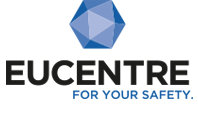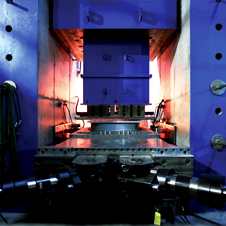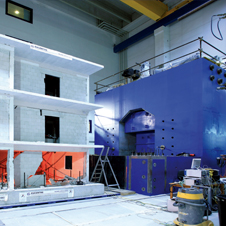Bearing Tester System at EUCENTRE
> Go to EUCENTRE Bearing Tester System website
The EUCENTRE Foundation, European Centre for Training and Research in Earthquake Engineering, based in Pavia (Italy), is a non-profit organisation that promotes, supports and sustains training and research in the field of seismic risk mitigation.
Part of EUCENTRE is its experimental laboratory TREES Lab. This experimental facility has been specifically designed according to the most innovative technologies and thanks to its high performance equipment allows conducting both dynamic and static experimental research on full-scale prototypes.
TREES Lab features four main experimental facilities, two of which are open for SERA Transnational Access: the high performance uniaxial Shaking Table and the bi-axial Bearing Tester System, designed for testing of full-scale bearings and isolation devices.
The Bearing Tester Machine is used to carry out static and dynamic experimental tests on isolation and dissipation devices. The base table (1.7 m x 4.3 m) allows vertical, longitudinal, roll, pitch and yaw degrees of freedom, under a static vertical load up to 40000 kN and an additional dynamic vertical load up to 10000 kN. The BTS Controller is a real-time digital controller that provides PID closed-loop control with a delta-P feedback signal. An additional component of the BTS, installed for particular tests, allows increasing the controlled degrees of freedom to 6 and performing tests with 3D movements.
Any of the testing installation can be integrated with a multi-purpose acquisition system to record experimental data (250-channel system, 18 bit A/D converter). Additionally, a contactless system for displacement monitoring is available for shake table testing. A new machine vision system recently replaced the one in developed in 2008, allowing for 3D monitoring of displacements.
Services currently offered by the infrastructure: The core activities of EUCENTRE are: applied research in the field of earthquake engineering, with a view to improve existing practice in assessment and reduction of seismic vulnerability and risk; support work towards the development of guidance documents for both practitioners and governing bodies; scientific and technological consultancy, at both national and international levels; training for practitioners and technicians.




